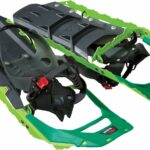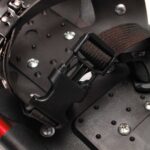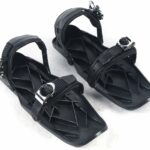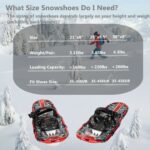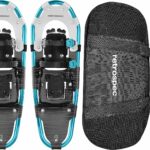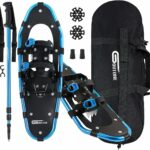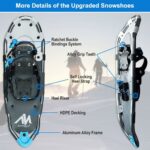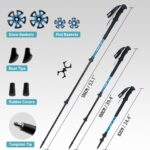If winter is your favorite season and you’re eager to explore snow-covered landscapes, you may have considered investing in snowshoes. However, you might be wondering if purchasing additional equipment such as poles is necessary. In “Do You Need Poles With Snowshoes?” we’ll unpack the benefits and drawbacks of using poles, and evaluate their utility in your snowshoeing journey. This will help you decide whether equipping yourself with poles is worthwhile, whether you’re a seasoned outdoor enthusiast or a beginner in wintertime adventures.
Understanding the Function of Poles in Snowshoeing
Starting off this journey, let’s first understand why poles are used in snowshoeing and what functional roles they play. Spoiler alert – they aren’t just there to make you look pro!
Role of balance
You see, when you’re walking on uneven terrain or moving up a slope, maintaining balance can be a bit of a challenge. Here, poles come to your rescue. They offer your body extra points of contact with the ground, reducing the chances of sliding or falling. It’s like having another pair of legs!
Elevation assistance
The benefits don’t stop at balance. Every wondered why hikers mountaineers use trekking poles? They help with ascending and descending slopes. Snowshoeing poles work the same way. They aid in propulsion, helping you exert less effort while climbing uphill, and providing better control while descending.
Creating rhythm
Last but not least, poles help you establish a rhythm while walking. Yes, you heard that right. They encourage full-body movement and help you synchronise your foot and arm motions. This not only makes you more efficient but also contributes to a rather enjoyable snowshoeing experience.
Types of Poles Suitable for Snowshoeing
Alright. Now that we’ve understood their role, let’s look at the different types of poles that are used for snowshoeing.
Adjustable poles
You’ve got adjustable poles which, as the name suggests, allows you to adjust their length according to your needs and the terrain conditions. These are particularly handy because they adapt to both uphill and downhill treks.
Fixed-length poles
Next up, we have fixed-length poles. These are typically lighter than their adjustable counterparts and are loved for their simplicity and rigidity. However, remember, these don’t offer the luxury of flexibility. So choose wisely.
Shock-absorbing poles
Shock-absorbing poles are where comfort meets utility. They come with an internal spring that absorbs shock while you walk, reducing strain on your wrists and arms. This is particularly helpful when you’re descending or moving through rugged terrain.
Choosing the Right Poles for Snowshoeing
Up next, let’s go through how to choose the right set of poles.
Consideration of height
Pole height is an essential consideration. Your elbows should comfortably rest at approximately 90 degrees when you hold the poles. You can easily adjust this in adjustable poles, but for fixed-length poles, you’d want to check this before purchasing.
Attention to weight
The weight of your poles matters too! Heavy poles can slow you down and tire you out quickly. Aluminium poles tend to be lightweight and durable, making them a popular choice. Carbon poles are lighter, but also more fragile.
Importance of grip
Lastly, don’t overlook your pole’s grip! It could be made of foam, cork or rubber. While rubber grips are good for cold weather, foam or cork grips have the upper hand in terms of reducing sweat.
How to Use Poles When Snowshoeing
Now, owning a set of poles is one thing, but knowing how to properly use them is another ball game.
Correct grip
Here’s a golden rule: Don’t grip your poles too tightly; it could cause unnecessary strain on your hands and wrists. Instead, place your hand through the bottom of the strap and allow the strap to rest on your wrist. Your hand should then hold the pole lightly, letting the strap do most of the work.
Proper pole positioning
You’d also want to position your poles correctly. When you walk, plant the pole about 12 inches in front of your stepping foot.
Understanding pole walking technique
Remember, the aim of snowshoeing is full-body movement, and your poles are integral to achieving this. When you step forward with your right foot, your left arm should swing forward with the pole, and vice versa.
Snowshoeing Without Poles: Pros and Cons
Before you think poles are a must for snowshoeing, let’s glance over the obvious and not-so-obvious pros and cons of going pole-free.
Freedom of movement
Yes, poles enhance your stability, but going pole-free offers you greater freedom in arm movement. This can make your snowshoeing experience feel more spontaneous and less structured.
Increased balance challenge
Walking without poles also increases the balance challenge for you. So, if you’re looking to test your balance or posture, you might want to leave the poles behind.
Reduced assistance uphill
The downside, however, is that without poles, you don’t get any help while climbing uphill or maintaining balance on rocky terrains. Hence, it could be challenging and tiring quickly without poles.
Situations when Poles are Essential for Snowshoeing
While the choice of using poles generally depends on individual preferences and physical needs, there are certain situations where poles can be a real game-changer.
Rugged terrain
Snowshoeing through rugged terrain without poles is like going into a battle unarmed. Poles increase your stability and prevent your chances of falling.
Deep snow
When you’re walking through deep snow, poles help you check the depth and safety of your steps. After all, you wouldn’t want to step into a hidden water stream or a hole.
Hill climbing
Finally, when you’re climbing uphill, especially in snowy conditions, poles can offer much-needed elevation assistance.
Recommended Poles for Snowshoeing
The market is full of options when it comes to snowshoeing poles. We have top-rated poles that boast a variety of features, budget-friendly options for those who want to be economical, and durable picks for those looking for longevity.
Top Rated Poles
Some of the top-rated poles come with features like ergonomic handles, anti-shock springs, and premium material construction. These definitely have a higher price tag but are often worth the investment.
Budget-Friendly Options
For snowshoers operating under a tight budget, there are a handful of budget-friendly options that deliver quality without burning a hole in your pocket.
Most Durable Picks
If you tend to be rough with your gear or plan to snowshoe frequently, you might want to consider the sturdiest options on the market. Look for strong material composition to ensure durability.
Suitability of Hiking or Ski Poles for Snowshoeing
While snowshoeing poles are a great piece of gear, what do you do if you already have hiking or ski poles? Can they be effectively substituted?
Comparison of function
Functionally speaking, all three types of poles aid in balance, rhythm, and propulsion, and can indeed be used interchangeably.
Pros and Cons of Substituting
On the positive side, substituting your snowshoeing poles with hiking or skiing ones can be cost-effective and save you the hassle of carrying multiple types of poles. However, the trade-off is that these poles may not offer the same degree of comfort, adjustability, and grip that dedicated snowshoeing poles provide.
Tips for Maintaining Snowshoeing Poles
Just like any other equipment, maintaining your poles can lead to a longer lifespan and better performance.
Regular inspection
Regularly inspect your poles for signs of wear and tear, especially if they’re adjustable or shock-absorbing poles. Pay attention to the locking mechanism, as it can get damaged easily.
Cleaning tips
A fresh water rinse after every use followed by proper drying can go a long way in maintaining your poles, especially during the salt-rich winter seasons.
Storage advice
Store your poles in a dry place, preferably fully extended. If they’re adjustable, it’s better to avoid storing them in a compressed state for long durations.
Safety Precautions When Using Poles in Snowshoeing
Lastly, let’s touch base on safety precautions.
Ensure you’re using poles correctly, as improper use can lead to injuries. The simple act of adjusting the strap length to perfectly fits your hand can prevent any possible sprains or dislocations.
Proper usage for stability
Remember, not to place your full weight on the poles. They are there for balance, not complete support.
Importance of adjusting strap lengths
Adjusting the length of the strap is crucial, incorrect strap lengths can slacken your grip or even cause the pole to stuck while walking.
In conclusion, poles are a versatile piece of equipment with various functions that can greatly enhance your snowshoeing experience. But like any tool, it takes knowledge and practice to use them safely and effectively. So, the next time you hit the trails, keep these tips in mind. Happy snowshoeing!
- What Snowboard Bindings Should I Get? - January 23, 2024
- What Size Screws For Snowboard Bindings? - January 23, 2024
- How To Snowmobile On Water? - January 23, 2024


